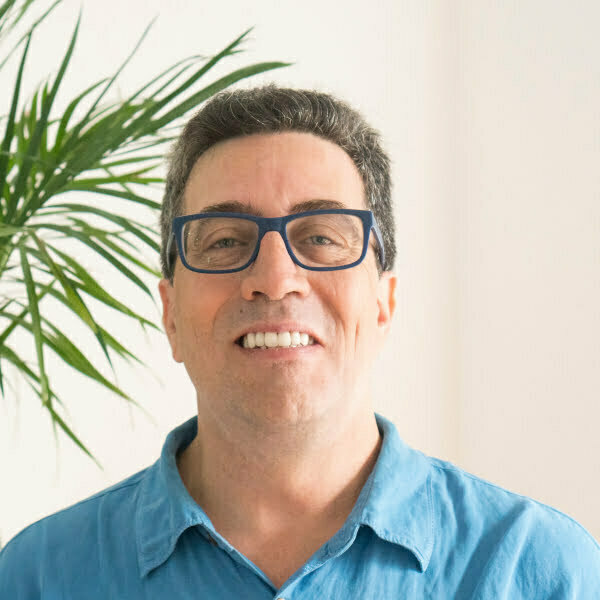


Introduction
In the complex and often solitary journey of stroke recovery, the significance of community and social connections emerges not just as a support mechanism, but as a cornerstone of rehabilitation that is rich with untapped potential. For many stroke survivors, the path to recovery is paved with physical, cognitive, and emotional challenges, each presenting its own set of obstacles and triumphs. Yet, amidst the myriad of rehabilitation strategies and therapies available, the profound impact of fostering strong community ties stands out as a facet of healing that is frequently overlooked and undervalued.
The concept of community in stroke recovery transcends the traditional notion of mere social interaction or companionship. It encapsulates a dynamic network of support, understanding, shared experiences, and collective wisdom that can significantly alter the course of a survivor’s rehabilitation journey. This network not only offers emotional solace and psychological upliftment but also plays a crucial role in motivating survivors, providing practical advice, and sharing success stories that fuel hope and resilience.
Building connections post-stroke is not just about finding people who can empathize with the survivor’s situation; it’s about creating a symbiotic environment where every interaction, every shared story, and every piece of advice adds a layer of strength to the survivor’s resolve to recover. The beauty of these connections lies in their diversity—ranging from peer support groups and online communities to more formalized community-based rehabilitation programs, each offering unique avenues for engagement and recovery.
In an era where digital platforms have erased geographical boundaries, the opportunity to cultivate these connections has expanded exponentially. Online speech therapy, for instance, exemplifies how technology can bridge the gap between traditional therapy methods and the need for a more personalized, community-centric approach to stroke recovery. By focusing on what the client is passionate about, this innovative therapy model not only addresses the linguistic and cognitive aspects of recovery but also integrates the client into a broader community of support, encouragement, and mutual growth.
As we delve into the nuances of building community connections for stroke recovery, it’s essential to remember that the journey of healing is as much about regaining lost abilities as it is about rediscovering one’s place in the world. Through the lens of community, we explore not just the “how” but also the “why” behind fostering these vital connections, offering insights that are seldom considered in the conventional discourse on stroke rehabilitation.
Understanding Stroke and Its Impacts
When a stroke strikes, it does not merely disrupt the physical functioning of the body; it alters the very essence of how one interacts with the world. The aftermath of a stroke can be a labyrinth of challenges that extend far beyond the visible symptoms. For survivors, the journey through this labyrinth is not just about physical rehabilitation; it’s about navigating a new reality where cognitive, emotional, and social dimensions are equally impacted.
The Aftermath of a Stroke
In the wake of a stroke, survivors often face a spectrum of physical impairments, from mobility issues to speech difficulties. However, the cognitive aftermath—memory lapses, difficulty in concentration, and changes in problem-solving abilities—presents a less visible but equally daunting challenge. These cognitive shifts can profoundly affect a survivor’s sense of self and independence, leading to a reevaluation of their role within their family, workplace, and community.
The Emotional Landscape
Equally significant is the emotional terrain that stroke survivors must traverse. Depression, anxiety, and frustration are common companions on this journey, shadowing the physical recovery with layers of emotional complexity. These feelings are not mere byproducts of the physical impairments but are deeply rooted in the stroke survivor’s grappling with their new reality. The emotional impact of a stroke is a tapestry of loss, adjustment, and resilience, each thread interwoven with the survivor’s personal, professional, and social identity.
The Importance of Comprehensive Support
Acknowledging the multifaceted impact of a stroke underscores the need for a comprehensive approach to support that addresses not just the physical but also the cognitive and emotional dimensions of recovery. Traditional rehabilitation models, while effective in addressing the physical aspects, often fall short in nurturing the emotional and cognitive recovery. This gap highlights the crucial role of innovative therapies and community support systems that can offer a more holistic rehabilitation experience.
In this context, online speech therapy emerges as a beacon of hope, offering a platform that transcends the conventional boundaries of therapy. By harnessing the power of digital connectivity, it provides a space where physical rehabilitation is integrated with cognitive and emotional support, tailored to the individual’s passions and interests. This approach not only aids in linguistic and cognitive recovery but also fosters a sense of community and belonging, crucial elements often missing in traditional therapy settings.
The journey of stroke recovery is a testament to the human spirit’s resilience. By broadening our understanding of its impacts, we pave the way for more inclusive, empathetic, and effective support systems that recognize the survivor’s whole being—body, mind, and soul.
The Power of Community in Stroke Recovery
The journey of stroke recovery is often visualized as a path walked by the survivor and their healthcare professionals. However, this perspective overlooks a crucial element of healing: the power of community. The role of community in rehabilitation extends beyond simple support; it acts as a catalyst for recovery, providing a network of empathy, shared experiences, and mutual encouragement that can significantly amplify the outcomes of traditional therapies.
Stroke Recovery Support Communities
Support communities for stroke survivors vary widely, encompassing local support groups, online forums, and virtual therapy sessions. Each of these communities offers a unique blend of resources, advice, and companionship, but they share a common goal: to create a nurturing environment where survivors can share their stories, challenges, and victories. This sharing goes beyond mere conversation; it is a form of therapy that validates the survivor’s experiences and fosters a sense of belonging.
Benefits of Community Support for Stroke Survivors
Engagement in community support groups offers tangible benefits for stroke survivors. It reduces feelings of isolation by connecting survivors with peers who have faced similar obstacles, creating a shared understanding that is profoundly comforting. Moreover, community engagement can lead to improved mental health, as the social connections formed within these groups provide emotional support that combats depression and anxiety, common companions of stroke recovery.
Role of Social Connections in Stroke Rehabilitation
Social connections play a pivotal role in the rehabilitation process, offering both psychological and practical benefits. On a psychological level, the encouragement and understanding from fellow survivors can boost self-esteem and motivation, crucial components for recovery. Practically, these connections can be a source of valuable information, offering insights into coping strategies, rehabilitation exercises, and ways to adapt to new limitations.
Building a Support Network After a Stroke
Creating a support network post-stroke is an intentional process that involves reaching out, being open to new relationships, and actively participating in community activities. For many survivors, online platforms have become invaluable in this process, providing access to a global community of support. Online speech therapy services, for instance, not only offer professional guidance but also introduce survivors to a broader community of individuals on similar recovery journeys. These digital communities offer the flexibility and accessibility that traditional in-person groups may not, enabling survivors to engage in therapy and community support from the comfort of their homes.
Integrating into Communities Post-Stroke
Reintegrating into communities post-stroke requires patience and persistence. Survivors may need to explore various groups to find the right fit, and it’s important to remember that the value of these communities lies not just in receiving support but also in giving it. Sharing one’s own experiences and successes can inspire and uplift others, creating a reciprocal flow of support that strengthens the entire community.
In conclusion, the power of community in stroke recovery cannot be overstated. It provides a multi-dimensional support system that complements medical treatments and therapies, offering emotional solace, practical advice, and a sense of belonging. As we continue to explore and understand the dynamics of these communities, we open up new pathways for healing, emphasizing the importance of connection, compassion, and shared experiences in the journey towards recovery.
Online Speech Therapy: A Modern Approach to Community and Recovery
In the evolving landscape of stroke rehabilitation, online speech therapy emerges as a beacon of innovation, bridging the gap between traditional therapy methods and the contemporary need for accessible, personalized care. This modern approach to therapy does more than just offer convenience; it redefines the rehabilitation experience by integrating the power of community and technology, thereby facilitating a more holistic recovery for stroke survivors.
Redefining Accessibility and Flexibility
The advent of online speech therapy has transformed the way stroke survivors access care. No longer bound by geographical constraints or the physical limitations that often accompany post-stroke recovery, individuals can now receive high-quality therapy in the comfort of their own homes. This unprecedented level of accessibility ensures that more survivors can embark on their rehabilitation journey without the added stress of travel, scheduling conflicts, or the exhaustion that comes from physical commuting.
A Personalized, Passion-Based Approach
What sets online speech therapy apart is not just its digital delivery but its capacity for personalization. American Online Speech Therapy, for example, employs a passion-based approach to therapy, tailoring sessions to align with each client’s interests and passions. This innovative strategy not only enhances engagement and motivation but also fosters a deeper connection between the therapist and client, creating a therapeutic experience that is both meaningful and effective. By incorporating activities and topics that the client is passionate about, therapy becomes a more enjoyable and relevant part of their recovery process.
Fostering Community Within Therapy
Online platforms offer a unique opportunity to build and nurture a community among stroke survivors. Through group sessions, forums, and social media channels, individuals can connect with peers who share similar experiences, challenges, and goals. This sense of community is integral to the recovery process, providing a support network that extends beyond the boundaries of traditional therapy. In these digital spaces, survivors can exchange stories, offer advice, and celebrate milestones together, creating a collective journey of healing and growth.
Comparing Online to Traditional Therapy
While traditional in-person therapy has its merits, online speech therapy offers distinct advantages that address the modern-day needs of stroke survivors. The flexibility of online sessions allows for a more consistent therapy schedule, crucial for making steady progress in recovery. Moreover, the digital format enables therapists to utilize a variety of multimedia tools and resources, enriching the therapy experience and aiding in the retention of new skills and concepts.
Conclusion
The journey of stroke recovery is a multifaceted endeavor that extends beyond the physical dimensions of rehabilitation. It encompasses the emotional, cognitive, and social aspects of healing, each playing a pivotal role in the overall well-being of the survivor. In this complex landscape, the power of community emerges as a critical element, offering a support system that nurtures not just the body, but the spirit and mind as well.
As we have explored, community support in the context of stroke recovery is not a one-size-fits-all solution. It is a tapestry of interactions, shared experiences, and connections that provide a foundation for resilience, motivation, and progress. From local support groups to online communities and innovative therapy platforms like American Online Speech Therapy, the avenues for building these connections are as diverse as the individuals seeking them. The key lies in recognizing the inherent value of these communities and actively engaging with them, whether as a participant seeking support or as a contributor offering insights and encouragement.
The advent of online speech therapy has marked a significant shift in how we approach rehabilitation, breaking down barriers and opening up new possibilities for personalized, accessible, and engaging therapy. By integrating the passion-based approach and fostering a sense of community among clients, these digital platforms offer a blueprint for the future of stroke recovery—a future where therapy is not just about regaining lost functions but about rebuilding lives with joy, purpose, and connection at their core.
In conclusion, the journey toward recovery for stroke survivors is enriched by the strength of community and the innovative approaches to therapy that prioritize personal interests, flexibility, and accessibility. As we move forward, let us continue to embrace these principles, recognizing that the path to healing is best traveled together, supported by the bonds of understanding, empathy, and shared humanity. The role of community in stroke recovery is not just a supportive element; it is a transformative force that redefines what is possible in the aftermath of a stroke.

Seth Koster M.S. CCC-SLP



